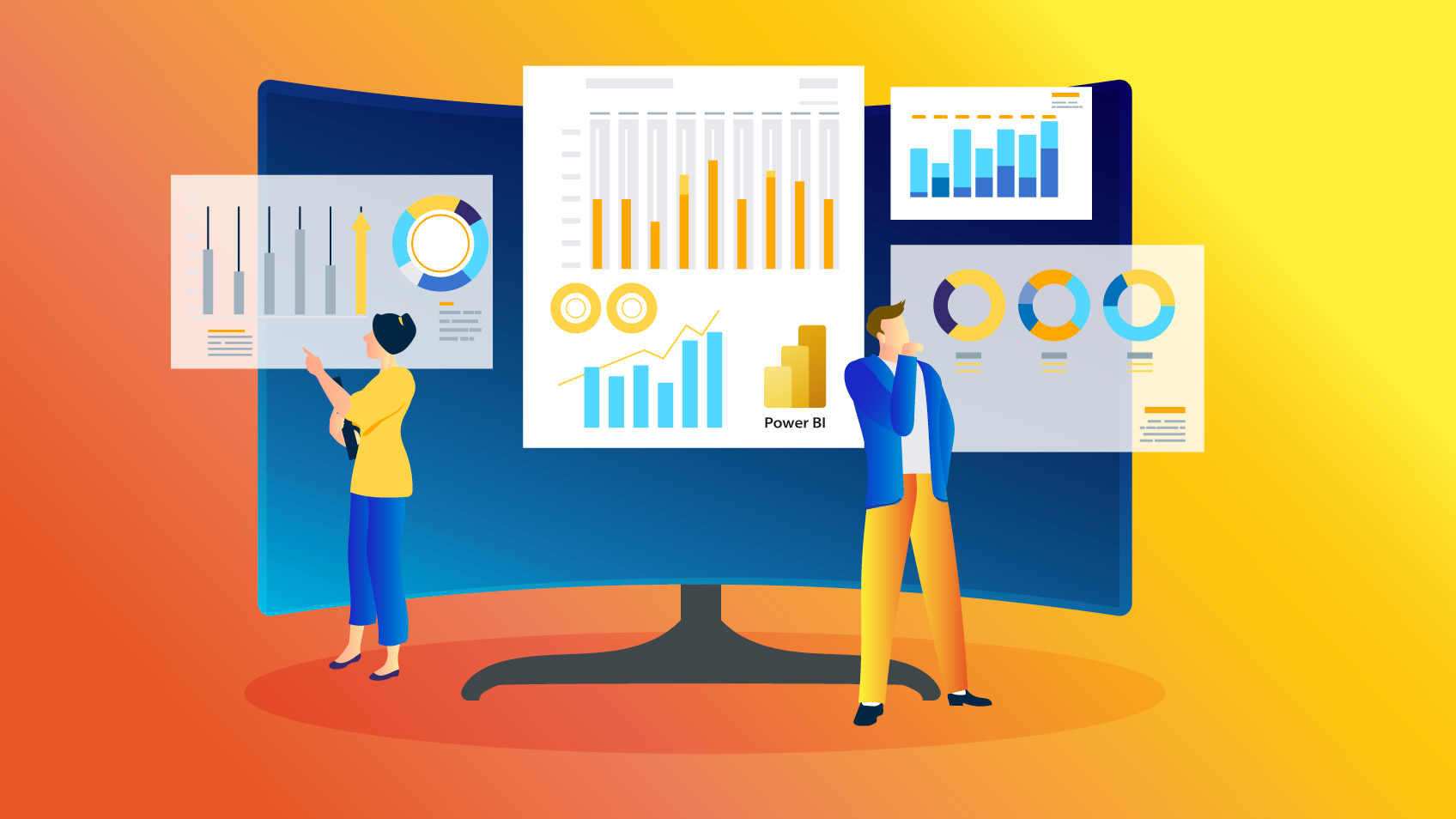Data is a resource that has become a vital part of the business world. It can be utilized to make or break a company. To maximize the potential of data, businesses make use of powerful tools such as Power BI and Microsoft Fabric. These platforms are the foundation of business intelligence, and when combined with Azure Data Factory, they become an unstoppable force in data analytics and decision-making.
Power BI: Your Business Intelligence Companion
Power BI, a product from Microsoft, is a complete business intelligence tool created to help businesses visualize and share information from their data. It allows users to design interactive dashboards and reports that transform raw data into actionable insights.

Whether you’re a small startup or a big enterprise, Power BI adapts to your needs. It seamlessly integrates with a variety of sources of data, making it easier to merge data from several platforms and databases. Its intuitive drag-and drop interface even non-technical users will be able to quickly create insightful reports and analyzes.
The Power BI platform supports real-time processing of data, making sure that you’re always working with the latest data. The platform offers a variety of graphs and visualizations that allow you to present data in a digestible, compelling way. Sharing reports and collaboration with colleagues improves decision-making, and encourages a data-driven business culture within your organization.
Microsoft Fabric: Weaving Data Excel
Microsoft Fabric is a framework that orchestrates and connects data from Microsoft services. Fabric weaves data into a cohesive entity that is used by businesses.
With businesses dealing with ever-increasing amounts of data, Microsoft Fabric provides the basis for data consistency and integrity. Microsoft Fabric can be integrated with a range of services, from Azure Data Lake Storage, Azure SQL Data warehouse to Power BI. The interconnectivity allows data to move smoothly and for insight to be derived from different sources.
The range of Microsoft Fabric is particularly evident in its data transformation capabilities. Utilize it to tidy up and prepare data for analysis. It is also possible to use it to ensure that your data is compliant to your organization’s guidelines on data governance. Microsoft Fabric assures you that your data is accurate as well as reliable and ready for analysis.
Azure Data Factory: The Gateway to Data Transformation
Azure Data Factory is another essential component in the modern business intelligence landscape. This cloud-based service allows you to manage and schedule data-driven processes. Azure Data Factory allows for significant insights through the orchestration of data transformation and movement.
Azure Data Factory’s versatility in connecting with different data sources is among its main advantages. It doesn’t matter if your data is in the cloud or in your premises It can be integrated effortlessly to give you a complete view of your data ecosystem. The platform supports batch processing streaming of data in real-time as well as big data analytics, which makes it suited for a wide range of uses.
Azure Data Factory provides a visual interface that makes it easier to manage the creation of data pipes. It’s easy to build the schedule, monitor, and plan data workflows, even when you’re not an expert in coding. This lets users stay in control of data integration as well as self-service data prep.
Power BI, Microsoft Fabric and Azure Data Factory: The Power Trio
When Power BI, Microsoft Fabric, and Azure Data Factory come together to form a dynamic trio that could revolutionize your data analytics processes. What are the ways they can work together?
1. Data Integration Azure Data Factory can connect to a variety of data sources to ensure your data is available. This integration technology feeds Microsoft Fabric which orchestrates data across various services. This ensures that your data is properly organized, cleaned and ready for analysis using Power BI.
2. Data Transformation: Microsoft Fabric is a important component of data transformation. It allows you to modify your data according to your needs. If it’s data-wrangling, cleansing, or changing the data, the fabric guarantees that your data is curated for meaningful analysis.
3. Power BI is able to perform the task after your data has been refined and prepared. Power BI allows you to produce visually appealing reports and dashboards that make the most complex data easily understandable. These insights can be shared with your team members to help them make data-driven choices.
4. Scalability: Azure Data Factory can expand to handle growing amounts of data. The combination of Power BI with Microsoft Fabric will guarantee that your data will remain reliable and consistent even when your business expands.
5. Real-time Insights: With real-time data processing capabilities, Power BI and Azure Data Factory provide real-time information that are crucial to make quick and informed decisions.
The end of the article is:
Business intelligence is changing rapidly and businesses must tap into the power of data in order to remain competitive. Power BI, Microsoft Fabric and Azure Data Factory are a powerful trio that will aid you in taking your business intelligence to new levels. These three components can help users create stunning visualizations, improve data consistency and streamline workflows. Discover the potential of your data through the use of business intelligence.






